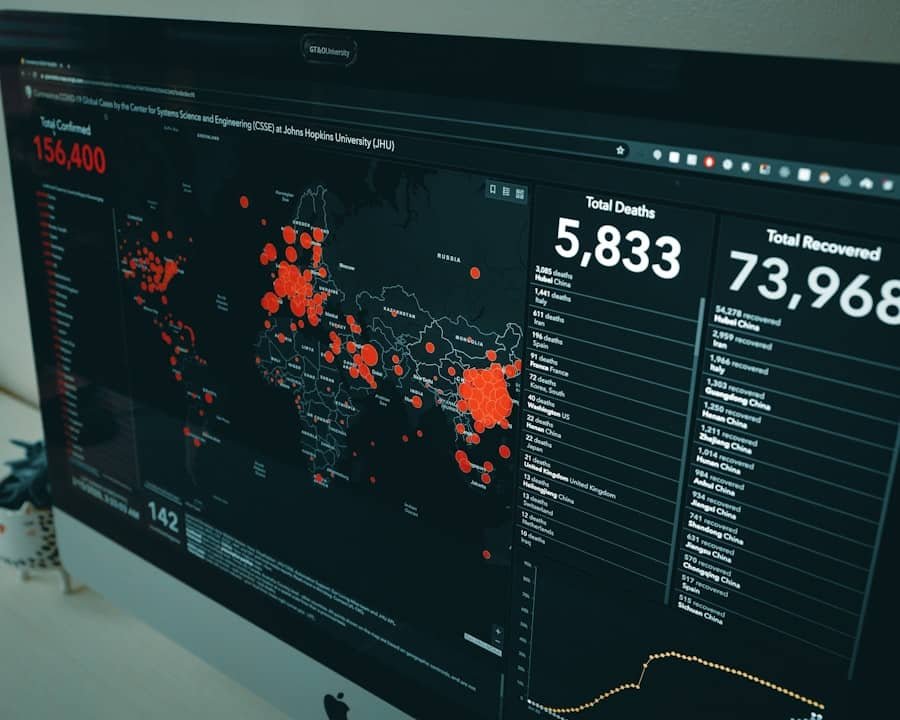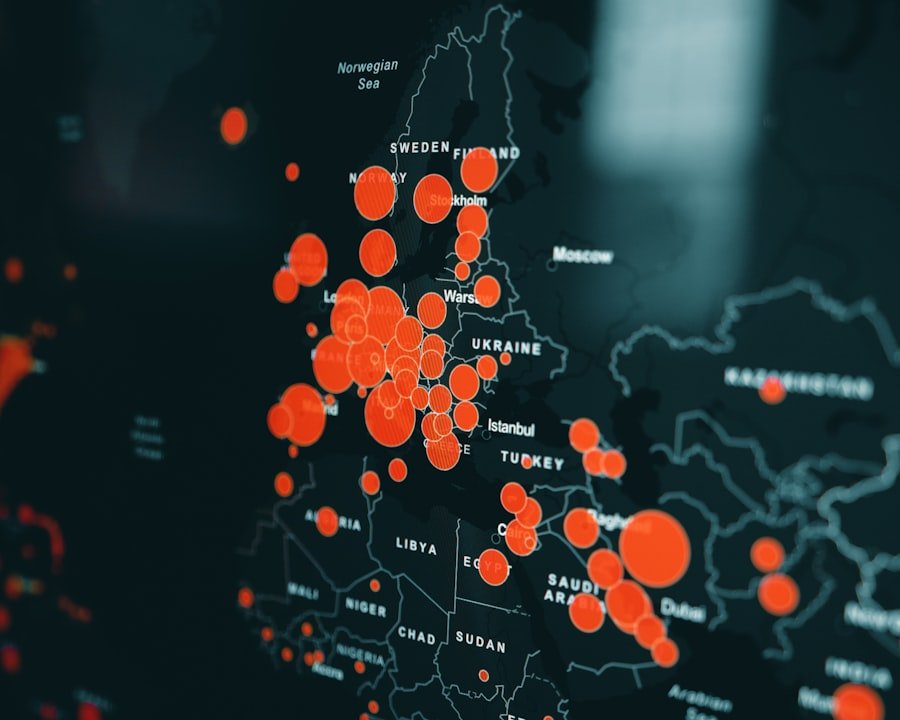Virtual Reality (VR) has emerged as a transformative force in the educational landscape, offering immersive experiences that engage learners in ways traditional methods cannot. The integration of learning analytics within this realm enhances the educational experience by providing insights into how students interact with VR environments. Learning analytics refers to the measurement, collection, analysis, and reporting of data about learners and their contexts, with the aim of understanding and optimising learning processes.
When combined with VR, this data-driven approach allows educators to tailor experiences to individual needs, monitor progress in real-time, and ultimately improve educational outcomes. The advent of VR learning analytics signifies a shift from passive learning to an active, participatory model. In a VR setting, students can explore complex concepts through simulations that replicate real-world scenarios.
For instance, medical students can practice surgical procedures in a risk-free environment, while engineering students can manipulate virtual structures to understand principles of design and physics. The data generated from these interactions—such as time spent on tasks, decision-making processes, and emotional responses—provides invaluable insights that can inform instructional strategies and enhance the overall learning experience.
Summary
- Virtual Reality Learning Analytics (VRLA) is a cutting-edge technology that combines virtual reality and data analytics to enhance the learning experience.
- VRLA offers benefits such as immersive learning, personalised feedback, and real-time performance tracking, leading to improved student engagement and academic outcomes.
- Data plays a crucial role in VRLA by capturing student interactions, behaviour, and performance, which can be analysed to provide insights for personalised learning and instructional design.
- Implementing VRLA in education requires investment in VR hardware, software, and training for educators, as well as addressing technical challenges and ensuring data privacy and security.
- Challenges and limitations of VRLA include the need for reliable internet connectivity, potential biases in data analysis, and the risk of over-reliance on technology, while ethical considerations involve data privacy, consent, and ensuring fair and transparent use of student data.
The Benefits of Virtual Reality Learning Analytics
One of the most significant benefits of integrating learning analytics into VR is the ability to personalise learning experiences. By analysing data collected during VR sessions, educators can identify individual learning styles and preferences. For example, if a student consistently struggles with a particular concept, the system can recommend additional resources or alternative approaches tailored to that student’s needs.
This level of customisation not only fosters a deeper understanding of the material but also promotes student engagement and motivation. Moreover, VR learning analytics can facilitate immediate feedback, which is crucial for effective learning. In traditional educational settings, feedback often comes after assessments, leaving students with little opportunity to correct misunderstandings in real-time.
In contrast, VR environments can provide instant feedback based on user interactions. For instance, if a student makes an error while conducting a virtual chemistry experiment, the system can immediately highlight the mistake and offer corrective guidance. This immediate reinforcement helps solidify learning and encourages students to take ownership of their educational journey.
The Role of Data in Virtual Reality Learning Analytics

Data plays a pivotal role in the efficacy of VR learning analytics. The types of data collected can vary widely, encompassing quantitative metrics such as time on task, completion rates, and interaction frequency, as well as qualitative data derived from user feedback and emotional responses. This multifaceted approach allows educators to gain a comprehensive understanding of student behaviour and performance within VR environments.
For instance, consider a VR programme designed for language learning. Data analytics can track how often students engage with specific vocabulary exercises, their pronunciation accuracy during speaking tasks, and their overall progress in language acquisition. By analysing this data, educators can identify trends and patterns that may indicate areas where students excel or struggle.
Such insights enable targeted interventions that can significantly enhance language proficiency over time.
Implementing Virtual Reality Learning Analytics in Education
The implementation of VR learning analytics in educational institutions requires careful planning and consideration. First and foremost, educators must ensure that they have access to the necessary technology and infrastructure to support VR experiences. This includes not only the hardware—such as VR headsets and computers—but also robust software platforms capable of collecting and analysing data effectively.
Training educators to utilise these tools is equally important. Professional development programmes should focus on equipping teachers with the skills needed to interpret data insights and apply them to instructional practices. For example, workshops could demonstrate how to use analytics dashboards to monitor student progress and adjust lesson plans accordingly.
By fostering a culture of data-informed decision-making, schools can maximise the potential of VR learning analytics to enhance educational outcomes.
Challenges and Limitations of Virtual Reality Learning Analytics
Despite its numerous advantages, the integration of VR learning analytics is not without challenges. One significant hurdle is the potential for data overload. With vast amounts of data generated during VR sessions, educators may find it overwhelming to sift through and extract meaningful insights.
This challenge necessitates the development of user-friendly analytics tools that present data in an accessible format, allowing educators to focus on actionable insights rather than being bogged down by raw data. Another limitation lies in the accessibility of VR technology itself. While costs have decreased over recent years, not all educational institutions can afford the necessary equipment or infrastructure to implement VR learning analytics effectively.
This disparity raises concerns about equity in education; students in underfunded schools may miss out on the benefits of immersive learning experiences simply due to a lack of resources. Addressing these inequities will be crucial for ensuring that all learners have access to the advantages offered by VR technologies.
Ethical Considerations in Virtual Reality Learning Analytics

As with any data-driven approach in education, ethical considerations must be at the forefront when implementing VR learning analytics. The collection and analysis of student data raise questions about privacy and consent. Educational institutions must establish clear policies regarding data usage, ensuring that students and parents are informed about what data is being collected and how it will be used.
Transparency is essential in building trust between educators and learners. Additionally, there is a risk that reliance on data could lead to an overemphasis on quantifiable metrics at the expense of qualitative aspects of learning. While data analytics can provide valuable insights into student performance, it is crucial not to lose sight of the holistic nature of education.
Educators should strive for a balanced approach that values both quantitative data and the rich narratives that accompany individual learning journeys.
The Future of Virtual Reality Learning Analytics
Looking ahead, the future of VR learning analytics appears promising as technology continues to evolve. Advances in artificial intelligence (AI) and machine learning are likely to enhance the capabilities of analytics tools, enabling more sophisticated analyses of student behaviour and performance. For instance, AI algorithms could predict student outcomes based on historical data, allowing educators to intervene proactively when students are at risk of falling behind.
Furthermore, as VR technology becomes more mainstream, we may see an increase in collaborative virtual environments where students from different geographical locations can learn together in real-time. This shift could lead to new opportunities for cross-cultural exchanges and collaborative projects that enrich the educational experience. In such scenarios, learning analytics will play a crucial role in understanding how diverse groups interact within virtual spaces and how these interactions impact learning outcomes.
The Impact of Virtual Reality Learning Analytics on Education
The integration of virtual reality learning analytics into education represents a significant advancement in how we understand and facilitate learning processes. By harnessing the power of data within immersive environments, educators can create personalised experiences that cater to individual needs while fostering engagement and motivation among students. As we continue to navigate the challenges and ethical considerations associated with this technology, it is essential to remain focused on its potential to transform education for the better.
In essence, virtual reality learning analytics not only enhances our understanding of student behaviour but also empowers educators to make informed decisions that drive positive educational outcomes. As we look towards the future, it is clear that this innovative approach will play a pivotal role in shaping the next generation of learners, equipping them with the skills and knowledge necessary to thrive in an increasingly complex world.
In a recent article on email verification solutions, the importance of accurate data in virtual reality learning analytics was highlighted. Ensuring that the email addresses used for student accounts are valid and up-to-date is crucial for tracking their progress and engagement with virtual reality learning platforms. By using a reliable email verification tool like Debounce, educational institutions can improve the quality of their data and make more informed decisions based on the analytics generated. This article provides valuable insights into how businesses can optimise their email verification processes to enhance their overall operations.
FAQs
What is Virtual Reality Learning Analytics?
Virtual Reality Learning Analytics is the process of collecting, measuring, analyzing, and reporting data related to the use of virtual reality technology in educational settings. It involves tracking and assessing students’ interactions and performance within virtual reality environments to gain insights into their learning processes and outcomes.
How is Virtual Reality Learning Analytics used in education?
Virtual Reality Learning Analytics is used in education to monitor and evaluate students’ engagement, progress, and learning outcomes within virtual reality learning environments. It helps educators and instructional designers to understand how students interact with virtual reality content, identify areas for improvement, and tailor instructional strategies to enhance learning experiences.
What are the benefits of Virtual Reality Learning Analytics?
The benefits of Virtual Reality Learning Analytics include the ability to track and measure students’ learning behaviors and outcomes in immersive virtual reality environments, identify patterns and trends in student performance, and make data-informed decisions to improve instructional design and learning experiences. It also provides insights into students’ cognitive processes and problem-solving skills within virtual reality simulations.
What types of data are collected in Virtual Reality Learning Analytics?
In Virtual Reality Learning Analytics, various types of data are collected, including students’ interactions with virtual reality environments, their navigation patterns, task completion times, performance metrics, physiological responses (e.g., heart rate, eye movements), and self-reported feedback. This data is then analyzed to gain insights into students’ learning processes and behaviors.
How does Virtual Reality Learning Analytics impact teaching and learning?
Virtual Reality Learning Analytics can impact teaching and learning by providing educators with valuable insights into students’ learning behaviors, challenges, and achievements within virtual reality environments. This information can be used to personalize instruction, provide targeted support, and create more effective and engaging learning experiences for students.
